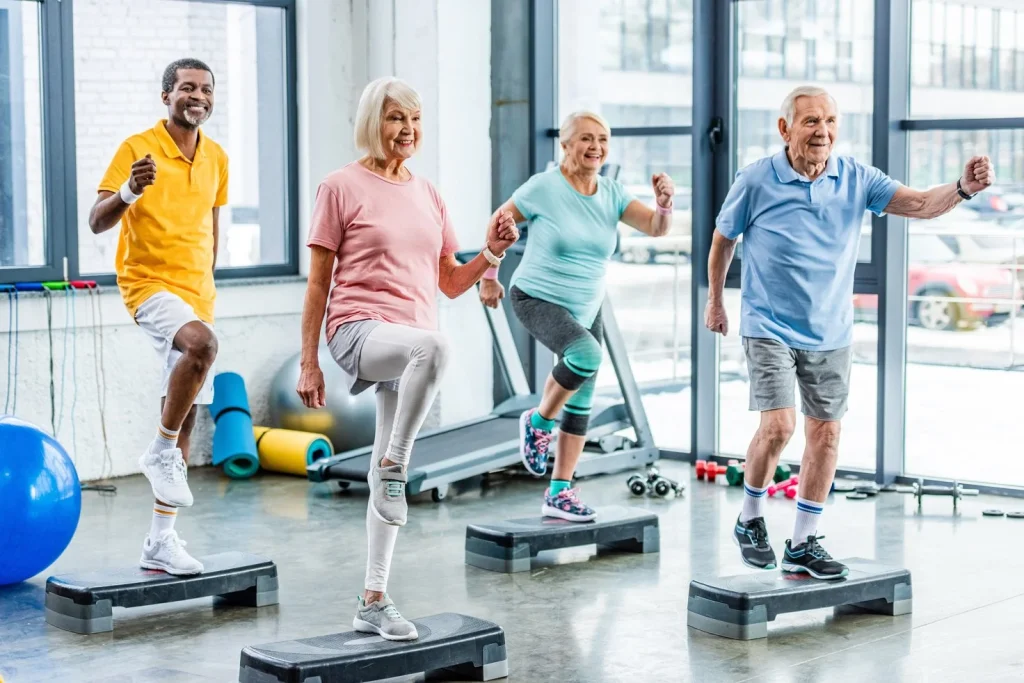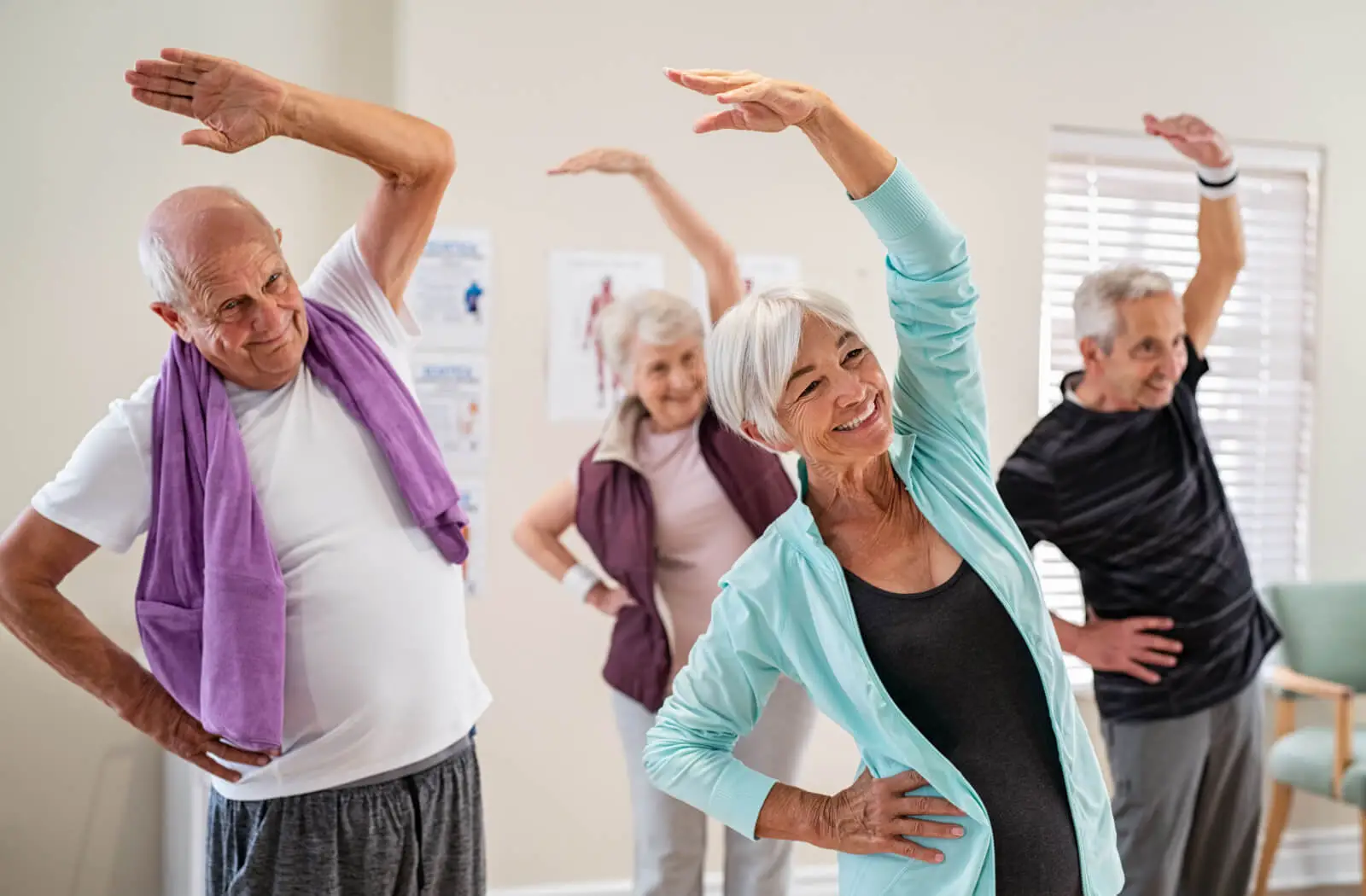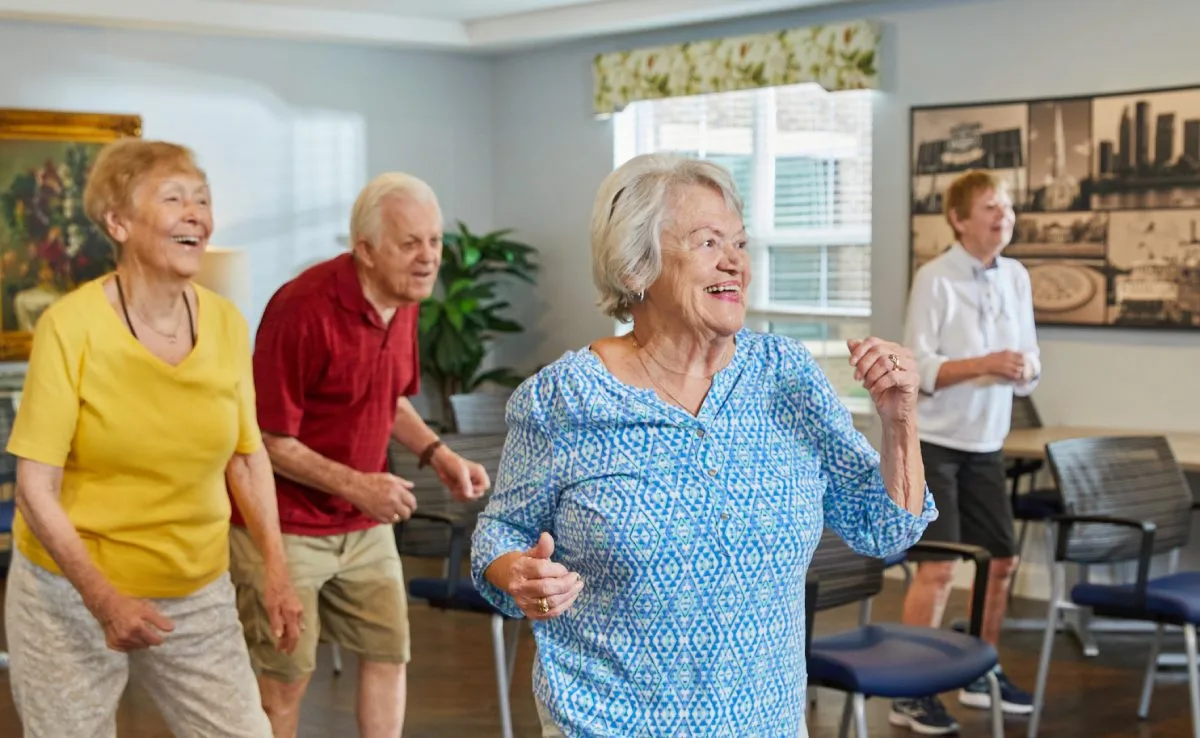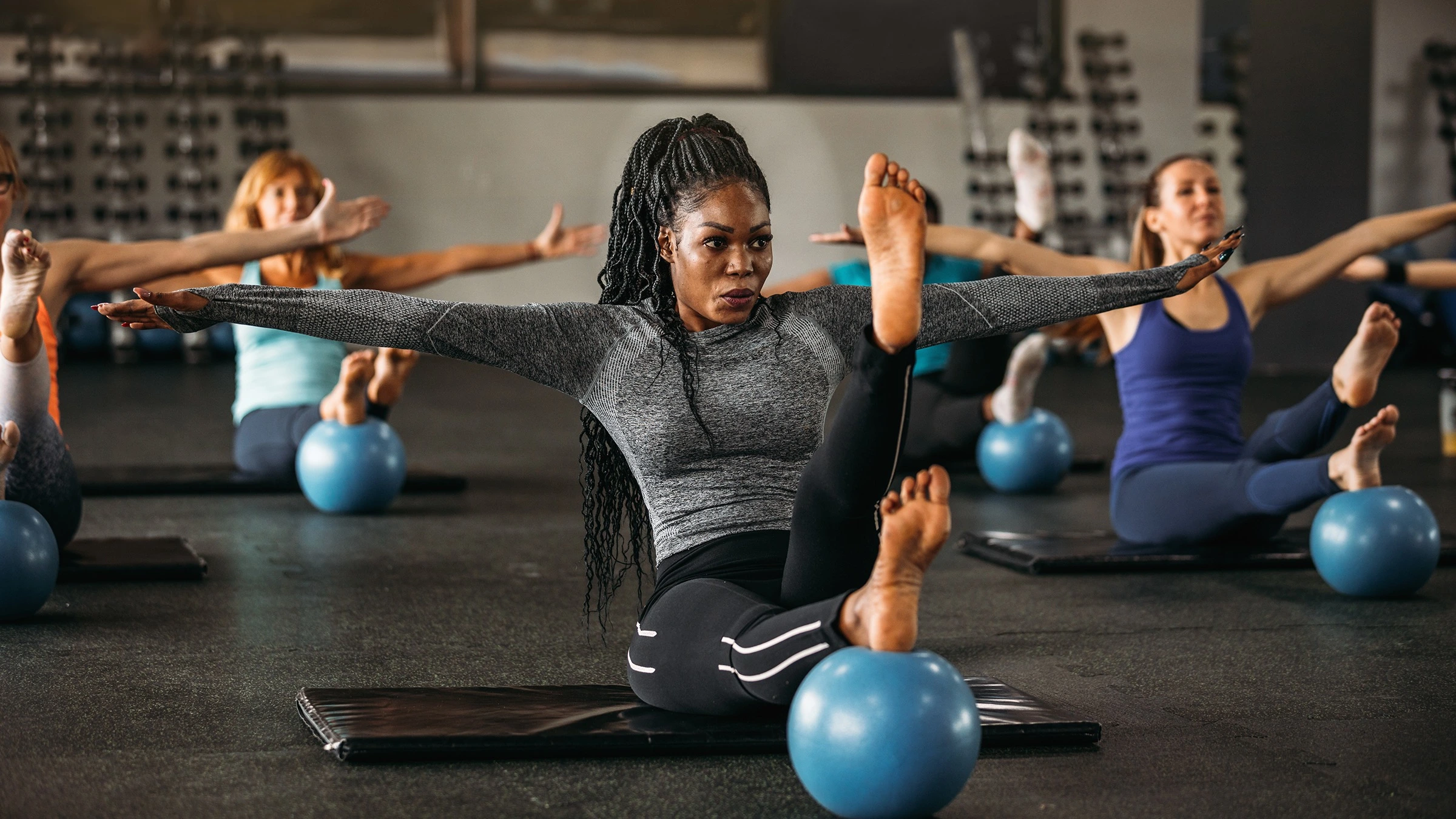
10 Benefits of Aerobic Exercise for Elderly Adults
Do you know what the most important benefits of aerobic exercise are? Aerobics is one of the most popular and effective aerobic exercises that not only helps improve cardiovascular health but also increases body endurance, weight loss, improves mood and controls stress. This exercise includes a variety of movements that are performed with a combination of energetic music and attracts many people due to its diversity and attractiveness.
Regular aerobics can help improve the quality of life and increase longevity. In this article from Human Health Mag, we are going to explain 10 benefits of aerobics. So stay with us until the end of the article.
What Is Aerobic Exercise?
Before introducing the benefits of aerobic exercise, it is better to first get acquainted with this exercise. Aerobic exercise refers to physical activities that are accompanied by an increase in heart rate for a long time and usually include exercises that require a high supply of oxygen. In this type of exercise, activities are performed continuously and continuously, so that oxygen is continuously transferred to the muscles and the cardiovascular system is improved. The main goal of this exercise is to improve cardiovascular capacity, increase physical endurance and accelerate the body’s metabolic process.
Aerobic exercises can include activities such as running, swimming, cycling and group activities for older adults such as Zumba and spinning. This type of exercise helps strengthen the heart and lungs, improves blood circulation and reduces the risk of heart disease. In addition to the physical benefits, aerobic exercise can help improve mental health and reduce stress. By doing these exercises regularly, people can increase their energy levels, help manage weight, and improve sleep quality. Aerobics is also on the list of exercise for seniors over 75.

Types of Aerobic Exercises
As mentioned, the benefits of aerobic exercise are many, and aerobic exercise in the sports concept includes all aerobic sports, including swimming, cycling, and running. However, if we look at aerobic exercise specifically, there are many different types of this sport. Dance aerobics and step aerobics are the two main types of this sport. Step aerobics itself includes various stretching and strength exercises and movements such as quad stretches for seniors.
For example, cross jacks, rope skipping, long jumps, butterfly jumps, and diagonal and paired high knees can be mentioned. Dance aerobics also has many different types. From cardio kickboxing exercises to dance, Zumba, hips, and spinning, they all fall into this category.
Benefits of Aerobic Exercise
Various aerobic exercises have many benefits and can help people’s health in several ways. The most important benefits of aerobic exercise are the following:
1- Improve cardiovascular health
- Exercising strengthens the heart muscles and improves the function of blood vessels. As the intensity of the exercise gradually increases, the heart gradually increases its ability to pump blood, which helps reduce the risk of heart disease and high blood pressure.
2- Increase respiratory capacity
- By doing aerobic exercise, lung function improves and the body becomes better able to use oxygen. This helps increase respiratory capacity and improve the ability to perform daily activities.
3- Reduce weight and body fat
- Aerobic exercise helps burn calories and excess body fat. This type of exercise improves metabolism and increases energy expenditure throughout the day, which can help you lose weight and maintain a healthy weight.
4- Improve mental health and reduce stress
- This exercise can help improve your mood and reduce stress and anxiety. Physical activity releases endorphins (happy hormones), which can help create a good feeling and reduce symptoms of depression and anxiety.
5- Increase endurance and physical strength
- With regular exercise, the body’s muscles are strengthened and the body’s general endurance increases. This allows the body to perform daily activities with more energy and efficiency.
6- Improve sleep quality
- Regular exercise activities, including aerobics, can help improve sleep quality. Active people usually sleep better and have fewer sleep problems.
7- Strengthen the immune system
- Aerobic exercises can help strengthen the body’s immune system and reduce the risk of infectious and chronic diseases. Regular physical activity can improve the function of the immune system and increase the body’s resistance to diseases.
8- Improve cognitive function
- Aerobic exercises help improve brain function and strengthen memory. Research has shown that exercise activities can help increase cognitive abilities and delay the aging process of the brain.
9- Lowers Blood Pressure
- Another benefit of aerobics is lowering blood pressure. Cardiovascular exercise may help manage the symptoms of high blood pressure.
10- Regulate blood sugar
- Regular physical activity helps regulate insulin levels and lower blood sugar, both of which are important for weight control. In a study of people with type 2 diabetes, researchers concluded that any type of activity, whether aerobic or anaerobic, has significant benefits for blood sugar control.

Are Aerobic Exercises Safe?
It is best to consult a doctor before starting exercise and to get the most benefits of aerobic exercise. Although aerobic exercise is safe for most people, in some situations it is better to exercise under the supervision of a doctor. For example, if you have diabetes, check your blood sugar levels before and after exercise. Eating a healthy snack before exercise can help prevent a severe drop in blood sugar. If you have muscle or joint pain (for example, if you have arthritis), warm up before starting exercise.
Take a warm shower before exercising. If you have asthma, look for slightly lighter exercise activities. This will give your lungs a chance to rest. Use a inhaler whenever needed. To start, exercise for 10 to 20 minutes every other day for a few weeks. This will help improve fatigue and muscle pain.
Preparing to Enjoy the Benefits of Aerobic Exercise
To enjoy the benefits of aerobic exercise, you need to prepare in advance to reduce the risk of side effects or injuries. Consider the following before exercising:
- Be sure to warm up well before starting aerobics and do gentle stretching or jogging
- Exercise lowers blood sugar. If you have diabetes, check your blood sugar levels before and after exercise. Eating a healthy snack before you start sweating can also help prevent your body from losing too much of its sugar.
- If you have muscle or joint pain, such as arthritis, take extra time to warm up before you start your activity. Take a warm shower before hitting the gym. Shoes with good cushioning and motion control can also help.
Necessary Care After Aerobic Exercise
The benefits of aerobic exercise are limitless and suitable for most people, however, there are certain conditions that should be considered after exercise, including the following:
- Be sure to cool down well after aerobic exercise and do gentle stretching exercises to cool down.
- Be sure to take a shower after aerobic exercise
- Do not eat heavy foods or high-calorie drinks for an hour after aerobic exercise; but be careful of your blood sugar drops.
- Be careful of hydrating your body and be sure to drink more water after exercise.

Benefits of Aerobic Exercise at Home
According to the benefits of aerobic exercise, many sports exercises, including crunches, planks, and various group sports such as aerobics, can be done indoors without the need for special equipment. Aerobic exercises at home will be one of the aerobic exercises to strengthen the cardiovascular system. Any aerobic exercise is accompanied by sufficient oxygen, which will increase your breathing and heart rate during the exercises. Aerobic exercises at home, in addition to ensuring health, challenge the lungs and muscles and can also improve the circulatory system in a safe environment.
If aerobic exercises or cardio are done regularly, it can help you lose weight, sleep better, and reduce the risk of chronic diseases. Today, due to social conditions and busy work, people may not be able to exercise in a gym or outdoors. For this reason, preparing aerobic equipment and doing aerobic and Pilates exercises at home will be the best option. The American College of Sports Medicine recommends that people get an average of 150 to 300 minutes of aerobic exercise per week, so getting some exercise can help people improve their fitness levels almost anywhere, whether it’s at home, in a park, or outdoors.
Concluding Remarks
In this article, we have explained the benefits of aerobic exercise. So, if you are looking for a professional exercise that can improve your health and muscle strength, as well as your energy and mood; Aerobics is one of the best exercises that can be done both in a group and individually at home. Types of aerobic exercises can be safe and suitable for anyone with any condition. However, if you have an underlying disease or your doctor has prohibited you from doing some activities, it is better to consult a sports medicine doctor before doing aerobic exercises.
It is recommended that most people do aerobic activity at least 5 days a week, approximately 30 minutes a day. This means 150 minutes of physical activity per week. You can combine different activities to make them more interesting for you. If you want to start exercising, you should do it at a low speed and intensity and gradually increase the speed and intensity. Note that doing aerobic exercise, even for a short period of time, is enough to reap its benefits.
Could you help us make this content even better? What do you love, and what can we improve? Share your thoughts below, feedback is the key to creating better content for you.

Frequently Asked Questions
How do I Learn Aerobics?
You can learn it by signing up for a gym and taking aerobics classes, or you can practice at home using aerobics instructional videos.
How Many Calories Does an Hour of Aerobics Burn?
The number of calories each person burns in an hour of aerobics varies depending on their weight, their speed, and the intensity and type of exercise they do.
Who is Aerobics Suitable for?
Aerobic exercises are suitable for anyone who is in good health and age. Those for whom a doctor considers aerobic exercises necessary can use aerobic exercises. Aerobics is the best option for those who are overweight, those who have high blood fat, or those who are interested in group physical activities.
Who is Aerobics not Suitable for?
Your doctor may prohibit some aerobic exercises for some people. Aerobic exercises require high breathing capacity; therefore, people with heart disease or respiratory problems may not be able to do these exercises. Aerobic exercises may also be prohibited for people with muscle injuries or a history of bone fractures, or these exercises can be done with the doctor’s advice. People with asthma or similar respiratory diseases should also be careful about the type of exercises they do.
